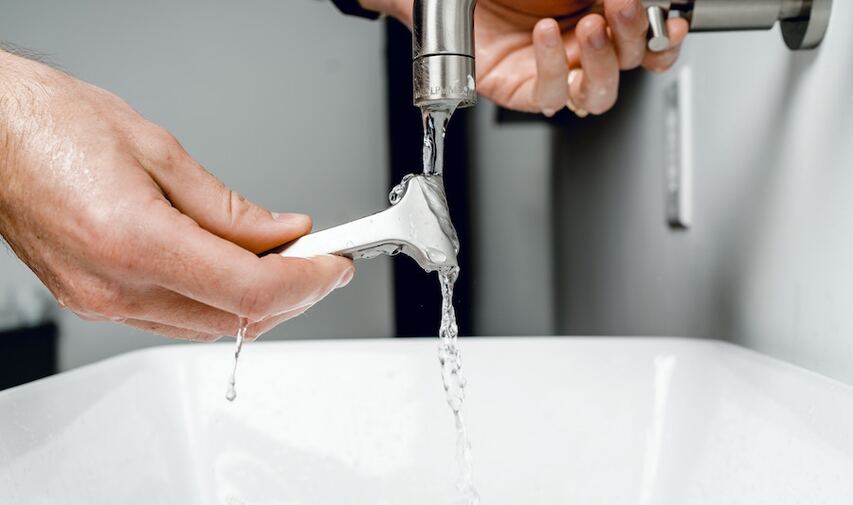The best shaving cream for sensitive skin
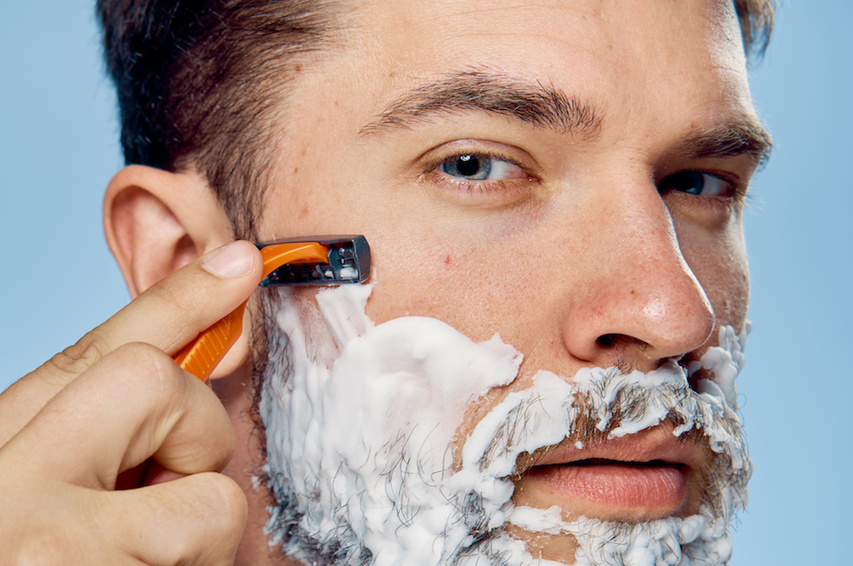
Mastering the Art of Shaving for Acne-Prone Skin: A Complete Guide
Dealing with acne is challenging enough, but adding hair removal to the mix can make things even trickier. The key to a smooth, irritation-free shave lies in using the right technique, razor (click here to find the right razor for you!), and products—with your shaving cream being one of the most important factors in the equation.
Why Your Shaving Cream Matters
Using the wrong shaving cream—whether it’s gel, foam, or oil—can lead to razor bumps, razor burn, ingrown hairs, and worsen acne. But with the right shaving cream, you can protect your skin, support your acne treatment, and get that smooth, bump-free shave you’re after.
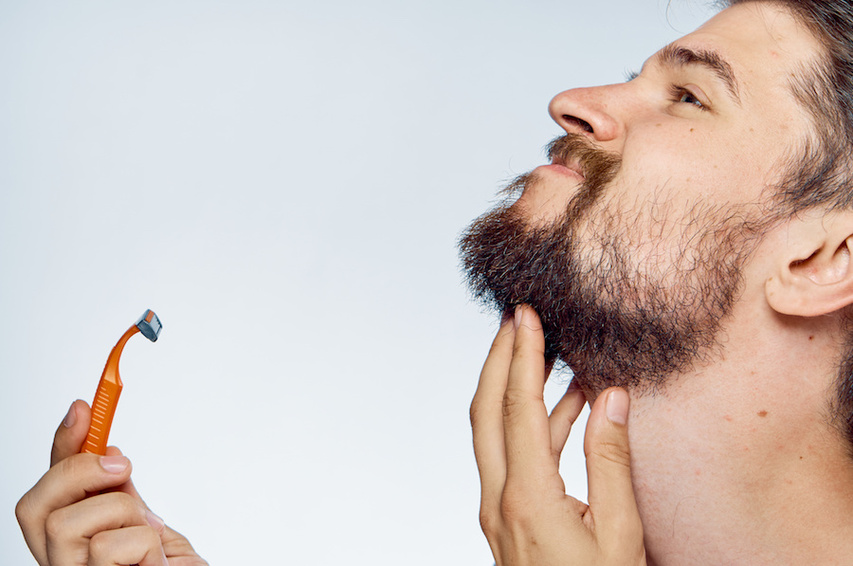
What is the Best Shaving Cream for My Skin Type?
Your choice of shaving cream should depend on your skin type. Here’s a quick breakdown to help you decide:
Sensitive Skin
Avoid astringents (like alcohol, witch hazel, menthol, and peppermint) as they can irritate sensitive skin. Look for gentle formulas and always use warm water instead of cold, which can constrict the skin and make shaving harder.
Dry Skin
Focus on hydrating ingredients like glycerin, which creates a barrier between your skin and the blade to prevent nicks and cuts. Glycerin also locks in moisture, making it a must for dry skin.
Normal to Oily Skin
Lucky you! If you don’t have acne or sensitive skin, you have more flexibility. Choose whatever shaving medium feels best for your skin—though you might still want to avoid harsh ingredients to keep things smooth and irritation-free.
Acne-Prone Skin
For acne-prone skin, it’s crucial to avoid clogging pores. Many natural products contain essential oils (like sandalwood or eucalyptus), which can lead to breakouts and razor bumps. Stick to oil-free, non-comedogenic shaving creams with soothing ingredients like aloe vera or allantoin.
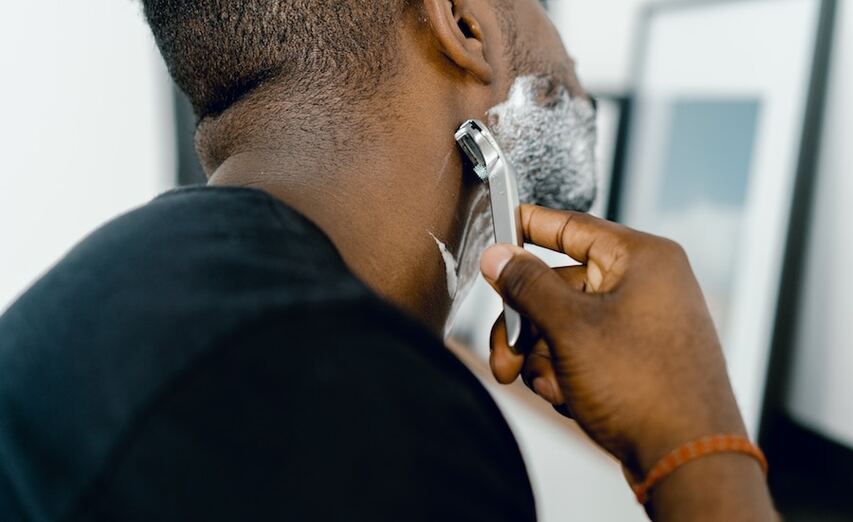
Shaving Mediums: What Should You Use?
Here’s a quick guide to the types of shaving products available and how they stack up:
-
Old-School Hard Shaving Soap
Rich and moisturizing but less convenient. Requires a brush to apply and doesn’t always suit sensitive or acne-prone skin. -
Foaming Shave Creams
Easier to use than hard soap and often contain glycerin, making them a better option for dry skin. -
Non-Foaming Shave Creams
Great for sensitive skin! These creams skip harsh foaming agents and provide a smooth, hydrating shave. -
Canned Shaving Foam & Gel
Convenient but often packed with harsh ingredients that can dry out or irritate the skin.
Our Recommendation:
For acne-prone skin, non-foaming, oil-free shaving creams with glycerin are your best bet. They protect the skin, hydrate effectively, and reduce the risk of irritation or breakouts. Check out the MDacne Soothing Shave Cream, designed specifically for acne-prone and sensitive skin!

Ingredients to Avoid in Shaving Cream
When it comes to skincare, we’ve become increasingly aware of ingredients that can be over-drying, irritating, or even harmful. The same goes for shaving products. Here are some key ingredients to avoid in shaving creams, especially if you have sensitive or acne-prone skin:
1. Parabens
Parabens are preservatives used in many personal care products. While many brands have stopped using them, it’s always a good idea to double-check the label and steer clear if you’re concerned about their potential health risks.
2. SLS (Sodium Lauryl Sulfate)
SLS is a surfactant that helps create lather, but it’s notorious for stripping the skin of its natural oils. This can lead to dryness, irritation, and an impaired skin barrier, which are bad news for sensitive or acne-prone skin.
3. Essential Oils
While “natural” may sound good, certain essential oils like sandalwood, eucalyptus, and lavender can clog pores and lead to breakouts or razor bumps. However, some oils, like jojoba and almond oil, are generally non-comedogenic and safe for most skin types.
4. Certain Astringents
Ingredients like menthol and witch hazel are often included to tone the skin but can irritate sensitive skin or trigger allergic reactions. If your skin tends to react easily, it’s best to avoid these.
5. Fragrance
Fragrance can be a major irritant, especially for sensitive skin. Opt for fragrance-free or lightly scented products to minimize the risk of irritation.
Ingredients to Look for in Shaving Cream
For acne-prone and sensitive skin, the best shaving creams contain ingredients that hydrate, protect, and soothe. Here are a few to look for:
1. Glycerin
Glycerin, typically derived from vegetable oil, is a superstar ingredient in shaving products. It acts as a humectant, locking in moisture and forming a protective barrier between your skin and the razor. This helps the blade glide smoothly while preventing nicks and irritation.
2. Natural Moisturizers
Look for shaving creams that include natural moisturizers like:
- Allantoin: Known for its soothing and keratolytic properties, allantoin helps increase skin hydration, promote wound healing, and reduce irritation. It’s even used in some anti-scar products.
- Aloe Vera: This powerhouse ingredient calms inflammation and adds a cooling effect, perfect for sensitive skin.
- Vitamin E: A skin-nourishing antioxidant that helps repair and protect the skin barrier.
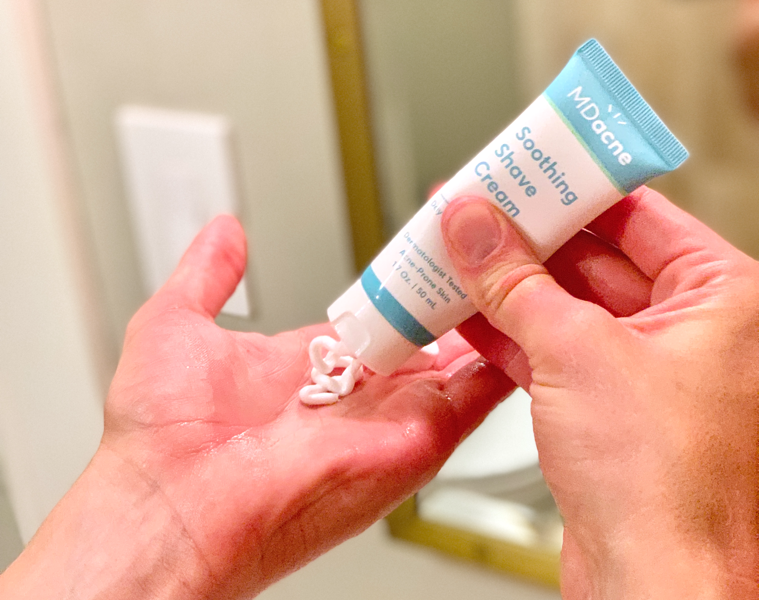
What is the Best Shaving Cream for Acne-Prone Skin?
Choosing the right shaving cream can feel overwhelming, especially for people with acne-prone skin. The key is to focus on a few essential features:
- Razor Glide: The shaving cream should create a protective barrier to help your razor glide smoothly without scratching or irritating your skin.
- Hydration and Moisturization: Look for ingredients that lock in moisture and keep your skin hydrated.
- Gentle, Non-Irritating Formula: Avoid shaving creams with harsh or pore-clogging ingredients that can trigger breakouts or inflammation.
Our top recommendation for acne-prone skin is a non-foaming, oil-free shaving cream with glycerin as a main ingredient. Glycerin is an excellent humectant that helps the razor glide effortlessly while hydrating and protecting your skin.
While there are few options that meet all these criteria, we’ve created the MDacne Soothing Shave Cream, specifically designed for sensitive and acne-prone skin. It’s oil-free, non-comedogenic, and enriched with calming ingredients to prevent irritation and breakouts. Plus, it’s TSA-friendly, so you can easily take it on the go!
Should You Use Aftershave?
What you apply to your skin after shaving is just as important as the shaving cream itself. For sensitive or acne-prone skin, traditional aftershaves are a no-go, as they often contain astringents like alcohol that can over-dry and irritate your skin.
Instead, opt for a lightweight, oil-free moisturizer to calm and hydrate your skin post-shave. Adding an oil-free sunscreen is also a great idea to protect your freshly shaved skin from UV damage without clogging pores.
Additional Tips for a Smooth, Irritation-Free Shave
1. Prepare Your Skin
Start with a gentle face wash or facial scrub to soften facial hair and remove dirt and oil. Hydrate your skin with warm water for about three minutes before shaving. This softens the hair, making it easier to achieve a clean, close shave.
2. Use the Right Shaving Cream
Choose a non-drying, oil-free, dermatologist-tested shaving cream rather than foam or gel. This helps defend against nicks, cuts, razor bumps, ingrown hairs, and breakouts while keeping your skin hydrated and irritation-free.
3. Use a High-Quality Razor
Opt for a multi-blade razor with blades spaced closer together (e.g., the Gillette Mach 3). This reduces pressure on each blade, giving you a close, comfortable shave without stubble or bumps. Avoid safety razors and electric shavers, as they can be less forgiving on sensitive or acne-prone skin.
4. Keep Your Blades Sharp
Dull blades cause tugging and irritation, increasing the risk of nicks and cuts. Replace your razor blade at the first sign of discomfort or when an indicator strip fades to white.
5. Master Your Shaving Technique
Shave with light, gentle strokes and let the razor do the work. Start shaving with the grain (in the direction of hair growth) to avoid irritation. If necessary, follow up by shaving against the grain for an even closer finish.
6. Save Sensitive Areas for Last
Shave delicate areas like your upper lip and around your mouth at the end of your shave. This allows the shaving cream more time to soften the hair, making it easier to get a smooth result. For tricky spots like under the nose, a single-blade razor can be helpful.
7. Rinse Your Blade Frequently
Rinse your blade often during your shave to prevent buildup on the edges. This improves the razor’s glide and overall comfort. Be mindful that some razors clog more easily than others (e.g., the Gillette Fusion tends to clog faster than the Mach 3)
8. Protect Your Face and Neck
After shaving, rinse skin with cool water and pat it dry. Use a hydrating oil-free moisturizer and/or oil-free sunscreen to soothe and moisturize and protect your skin.
To find the right acne treatments for your unique skin, take the free skin assessment by clicking here.


